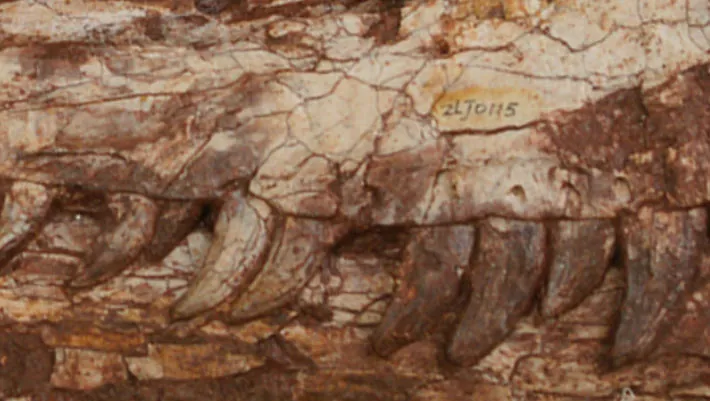
Unveiling Yuanmouraptor jinshajiangensis: A New Carnivorous Dinosaur from the Middle Jurassic Era!
2025-04-07
Author: Rajesh
Introduction
Paleontologists in China have made an exciting discovery: a relatively complete skull and vertebrae belonging to a previously unknown theropod dinosaur named **Yuanmouraptor jinshajiangensis**. This carnivorous dinosaur thrived approximately 170 million years ago during the Middle Jurassic period, a time when the Earth was a very different place.
Classification and Significance
The newly identified species is a medium-sized member of the **Metriacanthosauridae**, a group of carnivorous dinosaurs that inhabited the ancient supercontinent of Laurasia from the Middle Jurassic to the Early Cretaceous. This family is significant in understanding the evolutionary history of large predators.
Dr. Yi Zou, a prominent paleontologist at the Institute of Vertebrate Paleontology and Paleoanthropology, noted, “Metriacanthosauridae represents a basal-branching clade within the Allosauroidea, which includes some of the most formidable predators of their time. Some researchers suggest a closer relationship between metriacanthosaurids and carcharodontosaurids, indicating that Metriacanthosauridae might be a derived group within Allosauroidea.”
Geographical Distribution
Fossil evidence points to a diverse geographical distribution for this dinosaur family, with remnants found in various regions of China, such as Sichuan, Chongqing, Xinjiang, and Yunnan. Additionally, fossils have also surfaced in the Late Jurassic rocks of places like England, Kyrgyzstan, and Thailand, further indicating the wide dispersal of these ancient creatures.
Fossil Discovery
The fossilized remains of **Yuanmouraptor jinshajiangensis** were discovered in the **Zhanghe Formation** in Yunnan province. This specimen includes a remarkably complete skull measuring 53.9 cm in length and the first eleven vertebrae, including ten cervical and the anterior-most dorsal vertebra.
Phylogenetic Analysis
Researchers conducting phylogenetic analysis have placed this new species at a basal-branching position within the Metriacanthosauridae, unveiling the most comprehensive skull known among Middle Jurassic basal-branching tetanurans in China. This finding provides valuable insights into the combination of traits shared by members of this clade and includes both primitive and advanced anatomical features.
Conclusion
The study, which sheds light on the evolutionary pathways of these ancient predators, indicates a more complex relationship within the Tetanurae group and highlights that further research is needed to clarify these interrelationships. The details of this discovery have been documented in a recently published paper in the journal **PeerJ**.
With its unique features and significant evolutionary implications, **Yuanmouraptor jinshajiangensis** not only enriches our understanding of ancient ecosystems but also sparks curiosity about the diversity of life that once roamed our planet. As ongoing research continues to unearth more fossil evidence, the story of dinosaurs like Yuanmouraptor will keep evolving, revealing more about the majestic creatures that dominated the Earth millions of years ago!




 Brasil (PT)
Brasil (PT)
 Canada (EN)
Canada (EN)
 Chile (ES)
Chile (ES)
 Česko (CS)
Česko (CS)
 대한민국 (KO)
대한민국 (KO)
 España (ES)
España (ES)
 France (FR)
France (FR)
 Hong Kong (EN)
Hong Kong (EN)
 Italia (IT)
Italia (IT)
 日本 (JA)
日本 (JA)
 Magyarország (HU)
Magyarország (HU)
 Norge (NO)
Norge (NO)
 Polska (PL)
Polska (PL)
 Schweiz (DE)
Schweiz (DE)
 Singapore (EN)
Singapore (EN)
 Sverige (SV)
Sverige (SV)
 Suomi (FI)
Suomi (FI)
 Türkiye (TR)
Türkiye (TR)
 الإمارات العربية المتحدة (AR)
الإمارات العربية المتحدة (AR)